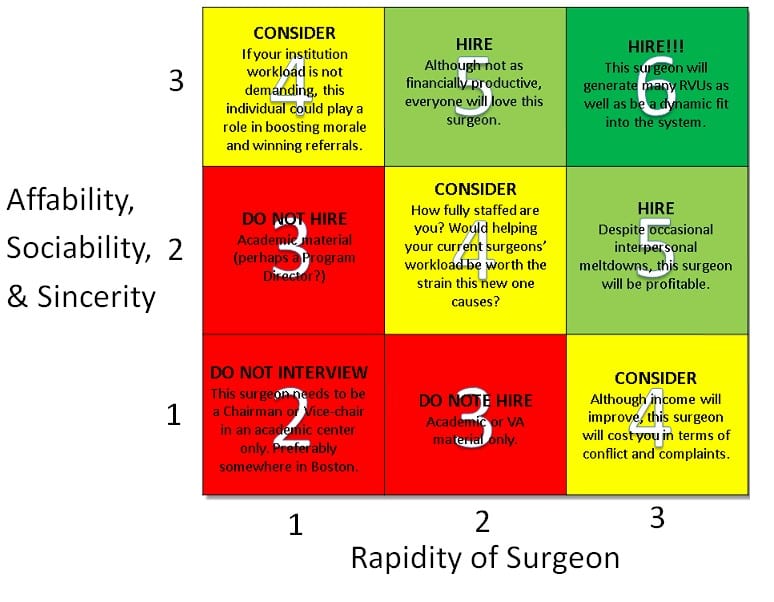NASHVILLE, TN – Noted researchers Dr. Harvey Stephens and Dr. Phil Burman offer a new matrix for evaluating surgeons for employment. The STAR (Surgeon Tolerability: ASS-Rapidity) Score considers the personality of the surgeon in the context of his or her operative times.
“It’s quite simple,” Stephens and Burman write. “We find that by measuring both indices on a three-point scale, hospital systems can predict whether a surgeon is worth hiring.”
An individual receives one to three points for both personality and operative rate. In addition to reliably predicting whether to hire, this two-to-six point score gives some insight into an appropriate role (See Figure 1).
The ASS value refers to the team spirit created by the surgeon based on Affability, Sociability, and Sincerity. A three (rare) would be a surgeon with tremendous bedside manner. A one would be the narcissistic, petulant type who typifies the specialty. Of note, these values are most accurately scored by circulator nurses. “They seem to best understand the small reptilian minds of surgeons,” the authors write.
Rapidity measures the speed of the surgeon. These are best scored by the anesthesiologist. Three is fast. For example, if anesthesia is still charting airway information when the appendix is removed, that is a three. If, on the other hand, anesthesia has caught up on charting, answered emails, and re-certified on ACLS before abdominal insufflation, that is a one.
The sum of these two values, a STAR Score predicts whether a surgeon should be hired. Institutions should seek five or six STAR surgeons, the report concludes. Although scarce, these surgeons generate revenue for the enterprise without creating too much friction with other staff and administrators. A four STAR surgeon might be acceptable in small private hospitals, but perhaps would better fit inside an academic institution where the surgeon’s deficiencies would be masked by the system’s bureaucratic ineptitude. Two or three STAR surgeons need to be in academics, preferably with minimal clinical time. These surgeons are often promoted quickly, usually to other institutions.
“We recently offloaded a two STAR to an Ivy League institution, and our morale and productivity doubled overnight,” Dr. Stephens mentioned in a phone interview. “I’m the sensitive, poetry-reading type, and this was good for me except my therapist will miss the lost business.”
The Joint Commission has discussed the potential for using a hospital’s average STAR Score as part of accreditation. The study will be published next month.
